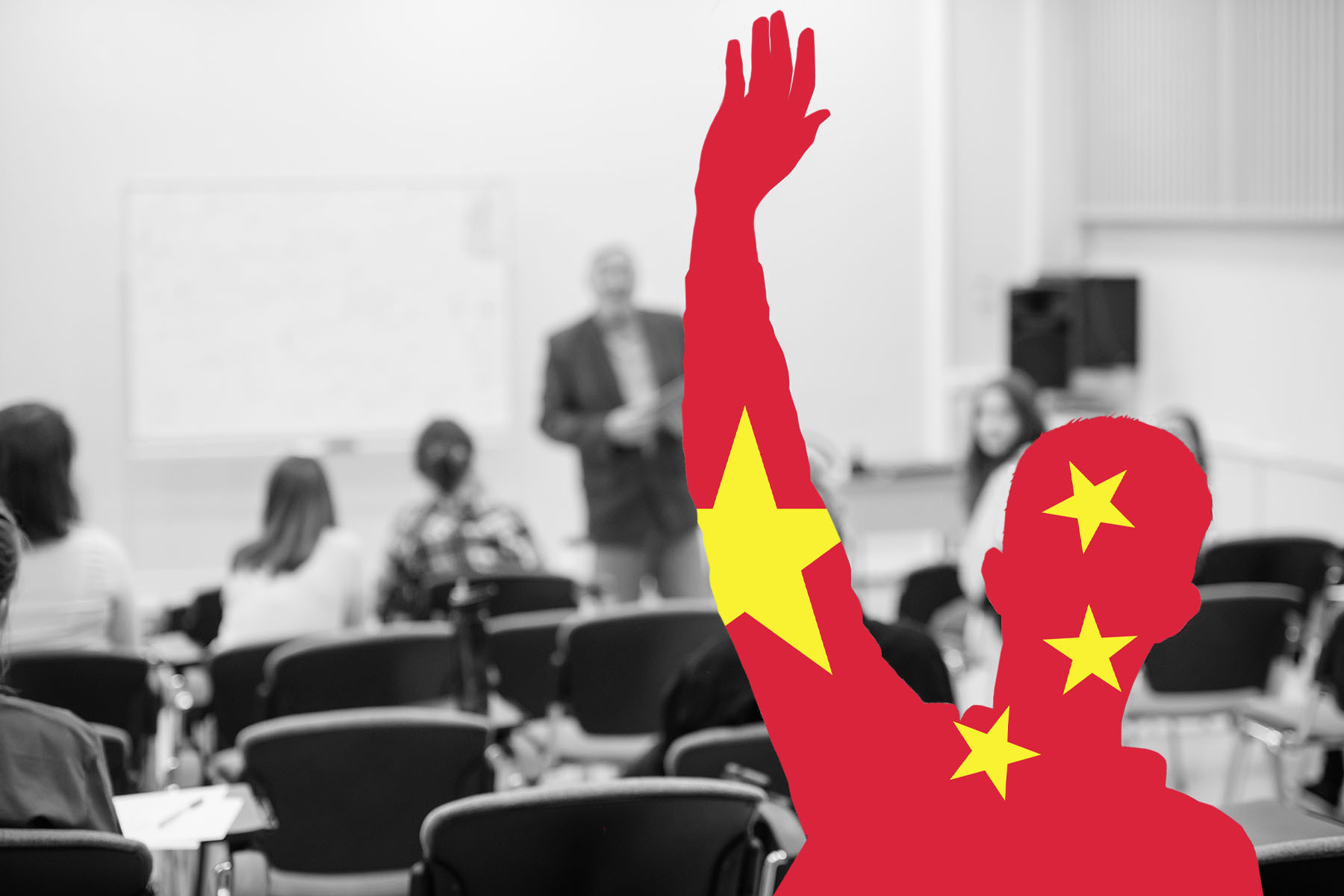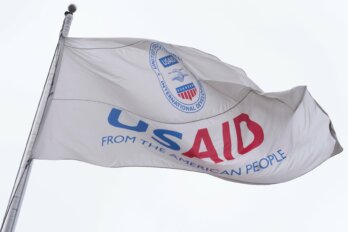T hrough naïveté and mindless belief in the universal benefits of academic exchange, some of Canada’s leading universities have contributed to the militarization of the Far East.
From the start of academic exchanges with the People’s Republic of China (PRC) in the early 1970s, the government of Canada has watched and largely approved of Chinese students focusing almost exclusively on science and technology faculties at Canadian universities. Meanwhile, Canadians going to study in China have engrossed themselves in Chinese language and culture and Maoism. For most of the past fifty years, Canadian universities and authorities were satisfied with this exchange. They saw giving Chinese students the benefits of Canadian knowledge and experience in science and technology as a gift toward the economic and industrial development of China.
Around the year 2000, however, Beijing and its People’s Liberation Army (PLA) realized that here was an opportunity to grab or develop technology for their program of rapid military modernization that had begun a decade before. The PLA calls the program “picking flowers in foreign lands to make honey in China,” and it is not at all as innocent as it sounds. It involves PLA engineers and scientists from the National University of Defense Technology (NUDT) and six other armed-forces universities disguising their military links and presenting themselves as simple scholars in order to engage in postgraduate research at Canadian universities.
What they are after is any science or technology that has military applications, and they have been very successful. It is only in the past five years or so that Western governments and their intelligence agencies have cottoned on to the extent of the flowers-to-honey program. And Canada is not the only target. A paper published in 2018 by the International Cyber Policy Centre of the Australian Strategic Policy Institute ranks Canada third after the United States and the United Kingdom in the list of countries targeted by PLA military scientists. The list of the top ten rounds out with Australia, Germany, Sweden, Singapore, the Netherlands, Japan, and France. It was compiled by seeking out the true identities of the disguised PLA scientists who published peer-reviewed research documents from 2006 to 2017. In that latter year, eighty-four Chinese researchers at Canadian universities were identified as undercover PLA scientists. In 2016, the number was 106, and in 2015, it was ninety-five. The number had been growing steadily since 2008.
Canada also loomed large in the list of the top ten target international universities. The University of Waterloo was fourth after universities in Singapore, Australia, and the UK. Placed ninth and tenth on the list were the University of Toronto and McGill University. That is not the whole story. A more recent study by the US strategic intelligence company Strider Technologies Inc., provided to the Globe and Mail and published in January 2023, shows that fifty Canadian universities have been successfully targeted by the PLA campaign. Like the Australian report, Strider also found the University of Waterloo top of the list of Canadian collaborators, witting or not. Also on the Strider list of NUDT partners are the University of British Columbia, Simon Fraser University, the University of Victoria, McMaster University, Concordia University, and the University of Calgary.
The Strider investigation found that, all told, in the previous five years, academics at ten of Canada’s leading universities had published 240 joint papers with Chinese military scientists from the NUDT. Among the NUDT researchers were experts in missile performance and guidance systems, mobile robotics, and automated surveillance. The topics included quantum cryptography, photonics, and space science.
Unlike in the US, where authorities do not hesitate to take action when evidence of security breaches are found, there have been few attempts in Canada to bring legal action against intellectual property espionage by China. One exception has been the firing of Qiu Xiangguo and her husband, Cheng Keding, from Canada’s high-security infectious diseases laboratory, the National Microbiology Laboratory, in Winnipeg in January 2021. The couple were alleged to have collaborated with known Chinese military researchers to study and conduct experiments on deadly pathogens. It is claimed that, in March 2019, they sent samples of the Ebola and Henipah viruses to China’s Wuhan Institute of Virology. The couple lost their security clearance two months later, and the Royal Canadian Mounted Police started an investigation.
Canadian taxpayers have funded some of the joint research with PLA scientists through the Natural Sciences and Engineering Research Council. How much public money was spent is not clear. In 2021, Ottawa toughened up the lending guidelines for the council, requiring more stringent risk assessments. This followed the blacklisting of the NUDT in 2015 by President Barack Obama’s administration in the US. Why it took Canada seven years to get the message is a mystery. But the restricting of Canadian government funds for research by PLA scientists has not stopped the collaboration. Beijing is lavish in the money it offers Canadian and other foreign universities for research with military applications, and Canadian researchers remain happy to take the cash.
The US expanded its 2015 blacklisting of NUDT associates in 2020, when it started denying academic visas to people it believed might steal intellectual property with military applications. A Canadian Security Intelligence Service (CSIS) report dated December 21, 2021, and seen by a Globe and Mail reporter, says that since the crackdown, PRC scholarship students coming to the US, Canada, and other Western target countries like the UK and Australia try to hide their military links and disguise the sensitivity of their research. They go to foreign universities to do research on disciplines that don’t ring security alarm bells but which are equally useful for military applications. The newspaper quoted the CSIS document, which was shared with Canada’s Five Eyes intelligence partners: “For example, one student majored in remote sensing in the PRC. In Canada, the same student’s major is forestry, which utilizes similar technology to remote sensing.”
Remote sensing uses satellites or airplanes to gather detailed data from great distances. Foresters use it to assess the health and extent of national woodlands. Generals use it to spot enemy locations, capacities, and movements.
The CSIS report says research scientists from China at Canadian universities and colleges are also receiving training on how to keep a low profile, how to avoid attracting CSIS attention, and how to avoid making friendships with other students and researchers.
T he modernization of the People’s Liberation Army was begun by Deng Xiaoping when he became the PRC’s paramount leader in 1980. The PLA had just taken a drubbing in its invasion of Vietnam in 1979. It was clear that this very large but ill-trained and ill-equipped peasant army was not capable of defending China or projecting power in the neighbourhood.
In the 1990s, the drive to acquire battlefield command-and-control systems began. Central to that drive was using whatever means worked to get military technology from other countries. One of those means was using well-established links with foreign universities to steal or co-operate in the development of technologies useful in the manufacture of weapons.
The whole military modernization effort over the forty-year period has been very successful. Beijing now has the largest navy in the world, including a fleet of at least 100 submarines and three aircraft carriers. With the growth of its military power and its initial successes in projecting its power—such as the construction of seven islands garrisoned with military outposts in order to dominate the South China Sea—so, too, have grown Beijing’s ambitions. At first, the aim was to be able to deter the US and other allies from coming to the aid of Taiwan, should Beijing choose to invade the island nation of 23 million people it claims as its territory. Now the Chinese Communist Party (CCP) leaders’ intention is to match or surpass the US as a global military power. To that end, Beijing is already well on the way to ending the hegemony of the US Navy in the Pacific and Indian Oceans. Global warming and the prospect of regular passage through the Canadian Arctic may soon bring the Atlantic Ocean into play as well.
Whether the sponsorship of research at Canadian universities by Huawei Technologies qualifies as a military incursion is a matter of interpretation. The company’s investment, in 2019, of close to $60 million in research in Canadian laboratories was certainly seen as a major security issue. In the previous five years, Huawei had established research relationships with seventeen Canadian universities. The money involved in each deal ranged from tens of thousands of dollars to many millions. The University of Waterloo alone received over $15 million from Huawei over the previous five years to fund sixteen projects. This relationship made Canada vulnerable to sanctions from the US, where authorities regarded Huawei as an arm of the CCP’s intelligence agencies. In addition to using Canadian laboratories and researchers to develop new technologies, for which the company kept the patents, Huawei had sold a lot of network equipment to wireless carriers like Bell and Telus.
These profitable raids into Canadian academia by the PRC’s military and electronic espionage agents might not have happened if Canadian governments had given clear warnings about the threats to the country’s security. But until the Huawei affair (stemming from the detention of the company’s chief financial officer, Meng Wanzhou, at Vancouver International Airport on December 1, 2018, on charges of fraud) and the kidnapping of the Two Michaels (the detention of Canadian nationals Michael Spavor and Michael Kovrig in China the same month), there had remained a large gap between CSIS’s and the Canadian political leadership’s views on Beijing.
CSIS and other security agencies had no doubt about the threat the CCP’s agents represented for Canadian national security and had been telling their political leaders about it for years. Politicians, with business people and academics talking loudly at their elbows, continued to argue that any threat was outweighed by the financial advantages of trade with China and the ephemeral benefit of continued contact with the regime.
In the early 2000s, CSIS, after years of having its warnings ignored, began to act. It was cautious and acted in a way and on an issue that didn’t easily attract political or business pushback. CSIS agents began talking to the administrators of Canadian universities and colleges that had made agreements for Beijing-funded Confucius Institutes to be set up on their campuses. These appeared to be innocent enough. Beijing offered them as institutes where Canadian students could study Chinese culture and language. It was obviously a piece of cash diplomacy, but colleges and universities that didn’t already have centres for studying China saw no harm in taking the gift. But the real purpose of the Confucius Institutes was much more sinister.
CSIS investigations showed these institutes were “espionage outposts” of the nearest PRC diplomatic office, and their real purpose was twofold. One was to spy on the university or college with the aim of stealing technology or recruiting agents of influence. The other was to monitor Chinese students doing undergraduate degrees. The students were closely observed in case they showed signs of adopting political or other interests, such as religion, unacceptable to the CCP. Any students who didn’t follow the CCP path would be whisked home immediately, their future prospects limited. The other reason for keeping tight watch, and therefore control, over Chinese students was to be able to deploy them as agitators or protesters on behalf of Beijing, should that be necessary.
For decades, students from China had been the largest contingent among Canada’s ever-burgeoning legions of foreign students. Facing shrinking grants from provincial governments and little help from Ottawa, universities and colleges in the 1990s and 2000s turned to throwing their doors wide open to foreign students, charging them higher out-of-province tuition fees than Canadians. A big inducement for foreign students was and is that a place at a Canadian academic institution can easily open the door to permanent resident status, and therefore citizenship, not only for the student but ultimately their immediate family as well. Several universities and colleges went so far down this road that more than half their tuition revenue came from foreign students. This made them vulnerable to events beyond their control, and they were hit hard both by COVID-19 and, in the case of students from China, by the Huawei affair.
In truth, Chinese students had already lost their top spot in the league of foreigners enrolled in post-secondary education in Canada before the pandemic and the political crisis. In 2019, there were 140,550 Chinese students in Canada, but there were 218,540 from India, which has remained the leading source of foreign students in Canada by far. In 2022, Indian students represented nearly 320,000 out of the 800,000 total, while there were just over 100,000 students from China. There are several reasons for this decline, but immigration lawyers say the diplomatic standoff between Ottawa and Beijing is a major one. It led to Canada being less attractive to Chinese students, and to Canadian authorities being far more stringent in their security screening of applicants.
B efore 2019 and the political and pandemic crises, when CSIS agents set out their concerns about the Confucius Institutes, the administrators of most Canadian universities and colleges accepted CSIS advice and ended their contracts with Beijing. The intimidation of Chinese undergraduate students and pressuring of them to be foot soldiers in political disputes were clear violations of the Canadian concept of what university life is meant to be about. The issue of joint research projects with Chinese graduate students raised different philosophical issues, however. For many academic institutions, this raised questions of scholastic freedom. CSIS agents found that their reception in the faculty offices was far less open and accepting than it had been with the Confucius Institutes question.
In February 2023, the University of Waterloo, top of several lists of Canada’s academic collaborators with the People’s Liberation Army, issued guidelines to graduate researchers about how to respond if approached for information by CSIS officers.
“As a standard part of their work,” outlined the memo, “security agencies will sometimes reach out to faculty engaged in sensitive areas of research to communicate possible concerns and understand where research areas may be vulnerable to foreign interference.
“This memo was created to help researchers and the Waterloo community understand their rights and to give guidance on how these interactions with security services can be carried out in order to facilitate a transparent process of engagement.”
The guidelines start by pointing out that researchers have no legal obligation to talk to CSIS agents; “furthermore, you do not need to meet them at the time and place with which they contact you.” Researchers were advised to first ask why the CSIS agent wanted to talk to them and to always be truthful in their answers. The memo also reminded them that they must not consent to any search of the university’s property or give CSIS agents access to any of the university’s electronic or other equipment.
The defensive mood of universities identified as targets of PLA researchers has been noted by CSIS. “We are not telling people who they should hire or not hire,” said CSIS director David Vigneault at an unprecedented public gathering of the heads of the security agencies of the Five Eyes allies in California in October 2023. “But we tell them . . . if you’re working for one of those seven universities the PRC associated with the People’s Liberation Army, you know it’s probably not a good idea if you’re working in cutting-edge technology in the university.”
“But you also need to understand that, unfortunately, the rules of engagement, the rules of the games have changed. They’ve been so bold about what they’re doing, how they have been stealing intellectual property, how they have interfered in our democratic processes, how they have been engaging on campuses, of all places to interfere,” Vigneault said.
Excerpted from Claws of the Panda: Beijing’s Campaign of Influence and Intimidation in Canada by Jonathan Manthorpe, expanded and updated edition. Copyright © 2019, 2024 Jonathan Manthorpe. Published by Cormorant Books Inc., Toronto. Reproduced with permission of the publisher. All rights reserved.




